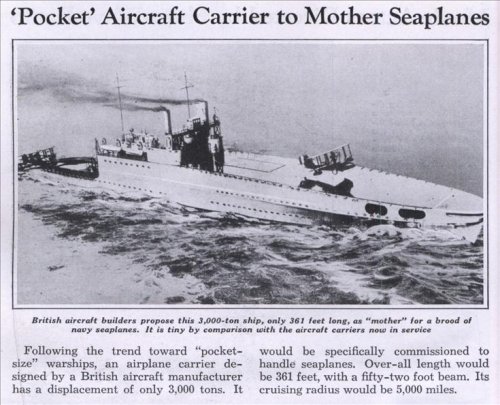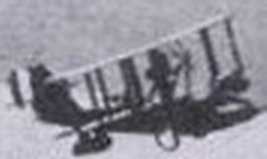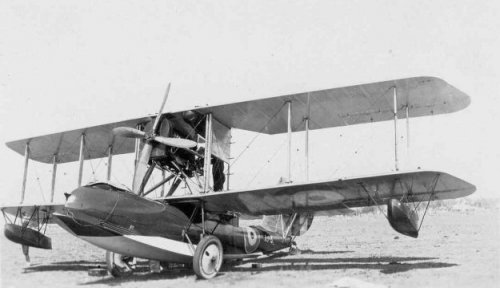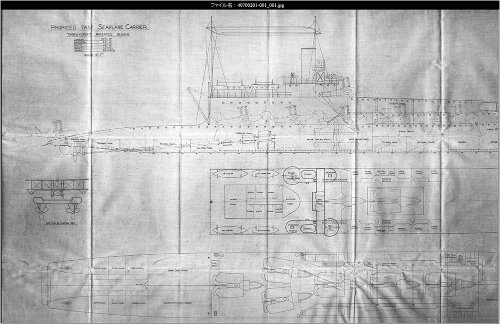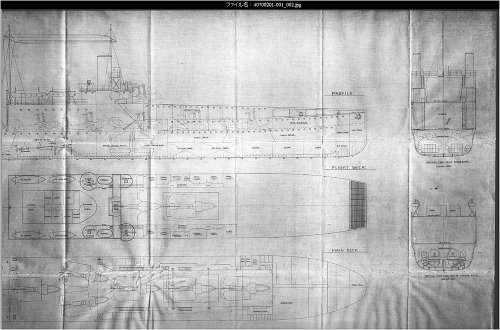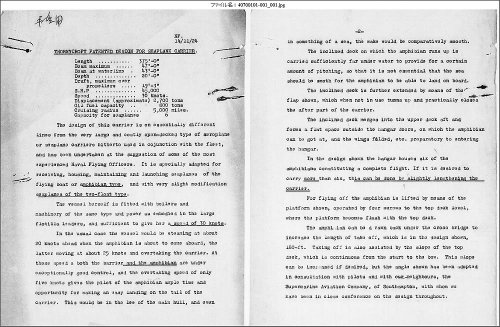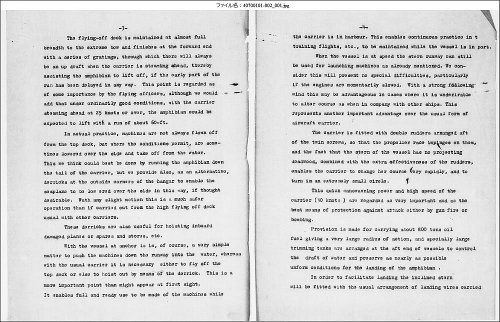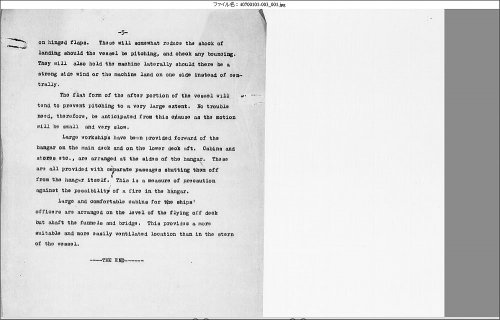lastdingo
Blogger http://defense-and-freedom.blogspot.de/
hat tip to ModernMechanix blog
The depicted aircraft appears to be the Supermarine Walrus. Comparable to J2F Duck, but much uglier.
‘Pocket’ Aircraft Carrier to Mother Seaplanes
Following the trend toward “pocket-size” warships, an airplane carrier designed by a British aircraft manufacturer has a displacement of only 3,000 tons. It
would be specifically commissioned to handle seaplanes. Over-all length would be 361 feet, with a fifty-two foot beam. Its cruising radius would be 5,000 miles.
The depicted aircraft appears to be the Supermarine Walrus. Comparable to J2F Duck, but much uglier.

